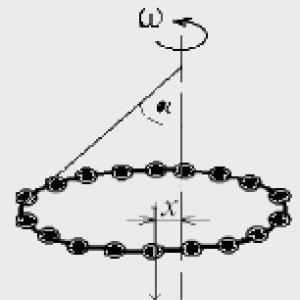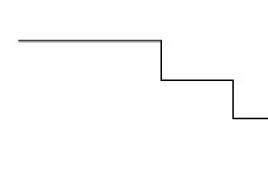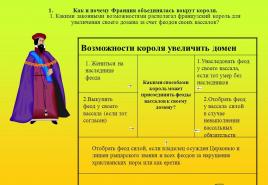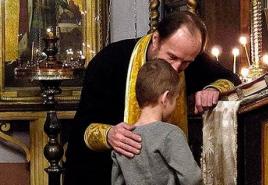How and why France united around the king. Teaching history
1. How and why France united around the king. 1. What legal opportunities did the French king have to increase his domain at the expense of the feuds of his vassals? Opportunities for the king to increase the domain What are the ways the king can annex the feuds of vassals to his domain? 1. Marry the heiress of the feud 2. To redeem the feud from his vassal (if he agrees) 1. To inherit the feud from his vassal, if he died without heirs 2. To take the feud from the vassal by force in case of failure to fulfill the vassal obligations To take the feud by force if the owner is convicted By the Church and stripped of the knighthood and all feuds for violating Christian norms or as a heretic

What were the advantages of the king in the fight against major feudal lords? Advantages of a king over large feudal lords Advantages of a king over large feudal lords First, the Royal domain of Ile-de-France is small, but well located: in the center of the country, at the intersection of land and river routes (both the Seine and the Loire); the most important city of Paris is also located here. Secondly, thanks to the coronation ceremony, the king was considered the anointed of God. The rivalry of large feudal lords among themselves prevents them from uniting against the king; the king can use their fight to his advantage



2. Capetian policy in the XII - early XIV centuries. Louis VI the Tolstoy () 1 Louis VII () 2 Philip II August () 3 Louis VIII () 4 Brought rebellious vassals into submission, both in his domain and beyond, mainly in the northern regions of France next to his domain. Armed to prevent the encroachments of secular seniors on the property of the Church. He built fortresses, stormed castles. As a result of his marriage to Alienor, he annexed Aquitaine to the domain, but after a divorce he lost it. Almost did not increase the domain, but managed to maintain the position of the Capetian in the face of a sharp strengthening of the Plantagenets. Taking advantage of the fact that the English king did not fulfill his vassal obligations for French possessions, he obtained his condemnation by the court of peers and by force annexed huge territories to the domain: Normandy, lands along the lower Loire, thereby sharply weakened the main rivals of the Plantagenets. Fortified Paris, enclosing it with a new wall. As a result of the Albigensian wars, he added the county of Toulouse in the south of France


Louis IX Saint Created the Supreme Judicial Body Paris Parliament of the country 2. Banned wars between feudal lords in the territory of the royal domain 3. Rule "40 days" postponement of war between feudal lords in unaligned lands 4. Introduced a monetary system for the whole country Contributed to the further process of unification

4. Victories and defeats of Philip IV the Handsome years. 1.Added the kingdom of Navarre and Champagne to the domain 2.Confirmed the vassalage of the Duchy of Aquitaine to France 3.Called the first States General (1302) 4.Defeated the Pope in opposition, laying the foundation the period of the Avignon captivity of the popes 1. Was defeated in the struggle for Flanders 2. In need of money: He liquidated the Order of the Templars, taking possession of its wealth; 3. Expelled the Jews from the kingdom, confiscating their property; 4. Resorted to damage to the coin, earning the nickname "king-counterfeiter" 5. Despite this, left behind a huge national debt

5. Convocation of the States General - 1302 In 1302, Philip IV convened the States General to support the fight against the pope. Three estates were represented in them: clergy, nobility, townspeople. They sat separately, in their own separate chamber, and each estate had only one vote. Thus, at the beginning of the XIV century in France, an estate monarchy arose - a state in which royal power relied on an assembly of representatives of the estates. Meeting of the States General.




- What circumstances contributed to the formation of the estate monarchy in France at the beginning of the XIV century?
§ 15.1. How and why France united around the king
In the XI century, France was going through a period of feudal fragmentation. In the XII century, the royal power managed to achieve the first successes in uniting the country. This meant that the rule of the king had to become solid throughout the country, as in the royal domain. And for this it was necessary to break the bonds of feudal ties and annex the former feuds to the domain. This could be achieved in several ways. The king could marry the heiress of the feud, he could redeem him from his vassal (if he so desired). If the king's vassal died without leaving an heir, his fief also returned to the king. The feud could take away the vassal by force if he did not fulfill his vassal obligations. But for this, the peers - "equal" to the guilty anointing of the vassal, had to agree with the opinion of the king, and they, fearing an increase in power over the kingdom, the king, preferred not to do this. Finally, the feud could be taken away from a person condemned by the church.

Anointing for the kingdom. Miniature
Compared with the large feudal lords, the king had two important advantages. First, its domain, Ile-de-France, was favorably located in the center of the country, at the intersection of land and river routes. The most important city in the country, Paris, was also located here. Secondly, because of the coronation ceremony, the king was considered the anointed of God.

Coronation of Philip II Augustus. Miniature. Describe the coronation ceremony of Philip II Augustus.
The ceremony of coronation of French kings, that is, their solemn enthronement, was performed in the cathedral of the city of Reims. The anointing to the kingdom, known from the Old Testament, endowed the king with divine grace. The head of the French Church, the Archbishop of Rheims, with prayers applied the sacred fragrant oil of myrrh on the king's forehead, arms, chest and back. The king swore to rule justly and mercifully, to protect the world, to protect the church. Then the anointed of God was crowned with a crown, he was given the signs of royal dignity: a scepter and a rod, symbolizing the justice of the monarch; the king's entourage held a sword and knightly spurs. Henceforth, the king's authority became sacred. Related to this is the spread among the people of the belief in the ability of kings to cure certain diseases with one touch of their hands.

Palace of the French Kings. Miniature. Explain why the palace of the French kings was built as a fortress.
Whether the king will be able to use his opportunities or his power will remain sacred, but powerless, depends on the balance of power. Having united, the large feudal lords, of course, could impose their will on the king. This has happened more than once in France and in other countries. However, as a rule, they competed with each other, and a skilled ruler could use their hostility to his advantage. In addition, the monarch had strong allies, no less interested in strengthening the royal power and uniting the country. Firstly, this is part of the vassals of his vassals, that is, small and medium feudal lords, who often suffered from the tyranny of the lords and sought protection from the royal power. Secondly, the townspeople were natural and reliable allies of the royal power. Thirdly, the unification of the country was supported by the church, which also suffered from the tyranny of the lords.
, France, Capetian
Purpose: consider the reasons for the strengthening of royal power; show the features of the Capetian policy; to characterize the features of the estate monarchy.
Tasks:
- educational - the study of terms, dates;
- developing - the formation of competencies through independent work with a source (autonomization - an independent search for information, informational - gaining new knowledge, communicative - work in pairs)
- educational - the ability to listen, express one's point of view, fostering a sense of patriotism towards the native country, on the example of the history of France.
Plan:
- How and why France united around the king.
- The hard way to the Capetian triumph.
- Holy king.
- Victories and Defeats of Philip IV the Handsome.
- The emergence of the States General.
Equipment: map "History of France in the XI-XIV centuries.", a computer and a projector, each desk is pre-assigned its own individual number.
During the classes:
The topic of the lesson is announced . (Attachment 1) (1 slide)
The lesson begins by posing a problem.
Teacher: Guys, look carefully at the map and tell me, what information can you glean by examining the map?
Students' approximate answers: many kingdoms, territories are marked with different colors, etc.
We draw a joint conclusion: Thus, France as a country was not united, it was fragmented into many possessions.
Teacher: (slide 2) Why do you think France should unite? Why does the state need to be united? What does the unity of the state give to the subjects?
Approximate answers: for protection, so that enemies do not attack, to defend against them, the state will be strong, the solidarity of the people will help to come to the aid of each other, to the aid of their Motherland.
Lesson problem: What does unification and strong king power give the state?
1. Teacher: And now, while working on your own with the tutorial, you will find answers to one big question: How and why France united around the king. The guys are given a task. The work will be performed in pairs, sitting at specially designated desks. During the performance of the groups, all other students who do not speak write down their answers in their notebook.
(slide 3) Desks numbered 1 parse paragraph 1 §15 pp. 147-148 with a simple pencil in hand and looking for an answer to the question: What opportunities did the king have to increase his domain?
- Marry the heiress of the feud;
- Redeem the feud from your vassal (if he agrees);
- To inherit a feud from your vassal if he died without heirs;
- Take away the feud from the vassal by force in case of failure to fulfill the vassal obligations;
- Take away the feud by force, if the owner is condemned by the Church and deprived of the knighthood and all feuds for violating Christian norms or as a heretic.
(Slide 4) Desks numbered 1 with a simple pencil in hand and looking for an answer to the question: What advantages did the king have in the fight against the feudal lords?
Firstly, the Royal Domain of Ile-de-France is small, but well located: in the center of the country, at the intersection of land and river routes (both the Seine and the Loire); the most important city is located here - Paris, 2. Secondly, thanks to the coronation ceremony, the king was considered the anointed of God, 3. The rivalry of large feudal lords among themselves prevents them from uniting against the king; the king can use their struggle to his advantage.
(Slide 5) Desks numbered 3 parse paragraph 3 §15 pp. 149-150 with a simple pencil in hand and looking for an answer to the question: What forces of society were the king's natural allies in the struggle to strengthen his power? (slide 4). The mainstay of the Capetian dynasty were the middle and small nobles, suffering from the tyranny of the dukes and earls. The king's petty feudal lords sought protection from the wrath of dependent peasants, who often rose to fight. A new class - the townspeople - became a loyal ally of the king. (townspeople, small and medium knights, clergy, peasants).
As the groups speak, the “correct” answers appear on the slide following their answers.
2.Teacher: now we are starting to study 2, 3 and 4 questions: The hard way to the Capetian triumphand also consider the politics of Kings Louis IX Saint and Philip IV the Fair.
In 987 the Capetian Dynasty was established in France. We write down the dates of the reign of kings in our notebook (slide 6)
Desks numbered 1,2,3,4 analyze the politics of the kings who participated in the unification of France. (slide 7). What have they done? Either a table is compiled (Appendix 2), or cluster (Appendix 3) (RKMCHP technology).
| Louis VI the Fat (1108-1137) № 1 |
He led to obedience to rebellious vassals, both in his domain and beyond, mainly in the northern regions of France next to his domain. Armed to prevent the encroachments of secular seniors on the property of the Church. Built fortresses, stormed castles |
| Louis VII (1137-1180) № 2 |
As a result of his marriage to Allenore, he joined Aquitaine to the domain, but after the divorce he lost it. Almost did not increase the domain, but managed to maintain the position of the Capetian in the face of a sharp increase in the Plantagenets |
| Philip II August (1180-1223) № 3 |
Taking advantage of the fact that the English king did not fulfill his vassal obligations for the French possessions, he achieved his condemnation by the court of peers and by force annexed huge territories to the domain: Normandy, lands along the lower Loire, thereby dramatically weakening the main rivals - the Plantagenets. Fortified Paris with a new wall |
| Louis VIII (1223-1226) № 4 |
Annexed the county of Toulouse in southern France as a result of the Albigensian Wars |
As the groups spoke (slide 8), a historical map, which can be used to trace the dynamics of the annexation and loss of territories.
Desks numbered 5,6 (given to stronger students) are taken apart
Part 5 - What Louis didIX Saint? Textbook pp. 152-153. (slide 9) Do not forget to write down the years of government.
- Created the highest judicial body - the Parisian Parliament.
- Banned wars between feudal lords - on the territory of the royal domain.
- Rule "40 days" - postponement of the war between the feudal lords in the unaligned lands.
- Introduced a unified monetary system for the entire country.
Thus, all his actions contributed to the further process of centralization of the country.
Part 6 - Victories (positive) and defeats (negative) in the reign of PhilipIV of the Beautiful textbook pp. 153-154. (slide 10) Do not forget to write down the dates of the kings' reign. Pros:
- Joined the Kingdom of Navarre and the County of Champagne to the domain.
- Confirmed the vassalage of the Duchy of Aquitaine to France.
- Convened the first States General - 1302
- He defeated the Pope in opposition, initiating the period of the Avignon captivity of the popes.
Minuses:
- He was defeated in the fight for Flanders.
- In need of money:
- liquidated the Templar order, taking possession of its wealth;
- expelled the Jews from the kingdom, confiscating their property;
- resorted to spoiling the coin, earning the nickname "the counterfeiter king"
- left behind a large national debt.
- States General - 1302 -writing in a notebook (slide11)
In the 13th century, royal power increased significantly in France.
In 1302, Philip IV convened the States General to support the fight against the pope. Three estates were represented in them: clergy, nobility, townspeople. They sat separately, in their own separate chamber, and each estate had only one vote.
Thus, at the beginning of the XIV century in France, an estate monarchy arose - a state in which royal power relied on an assembly of representatives of the estates.
Let's get back to the problem (slide 12). What does the unification and strong power of the king give to the state and its inhabitants?
Reflection (slide 13).
- The lesson attracted me to ...
- It was a discovery for me that ...
- Did we manage to solve the problem posed at the beginning of the lesson?
Homework (slide 14) §15 - read, retell.
Give a detailed answer to the question:
What gives the state and the inhabitants of the country the unification and strong power of the king?
Goodbye! (Slide 15)
Exploring France's long journey to the unity of its lands and territories. After Charlemagne - the Capetian period, and then the reign of Louis VI and Philip II. What problems did the rulers meet on their way?
The beginning of the Capetian reign
After the empire of Charlemagne broke up into many separate lands in the 9th century, the emperor's descendants retained the right of ownership of a small kingdom called France. Every year the Carolingian dynasty, under the onslaught of the Normans, gradually lost the territory of the kingdom.
In 987, the last ruler of the Carolingian dynasty died. Power passed to the new king, Hugo Capet. At that time, the territory of France was negligible; it consisted of the suburbs of Paris and Orleans. The first Capetian managed to significantly expand the territory of the kingdom.
Two centuries later, France was a powerful kingdom with the center of Ile-de-France. The reason for the fruitful reign of the Capetian was a wise and thoughtful policy, the ruling king, during his lifetime, transferred power to his son, in order to further prevent a possible struggle for the throne, which would negatively affect the political and economic state of the state.
The reign of Louis VI
King Louis VI first of all understood that the expansion of the kingdom needed strong support within the state. He interrupted the tradition of appointing representatives of the aristocracy to senior positions. Instead, he surrounded himself with loyal and wise people from the lower strata of the population.
In 1066, France had a serious enemy in the person of the former vassal Henry I, who, thanks to a profitable marriage and the expansion of his dynasty, became king of England. At the same time, he became the sole ruler of the historical territories of the French kingdom of Aquitaine, Anjou, and Normandy.
This greatly complicated the foreign policy situation for Louis VI. If it seemed quite real to win back the northern regions from the vassal, then it was at least unreasonable to enter into a military conflict with powerful England.
The reign of Philip II - reunification of the lands
When Philip II became king of France in 1180, foreign policy changed dramatically. The fifteen-year-old boy showed a very uncharacteristic for his age cunning political calculation.
He made a truce with Henry II and even managed to become the closest friend of the royal family. Philip spent many years waiting for England to have a weak spot. And it soon appeared.
In 1199 John the Landless became king of England. Taking advantage of John's softness, Philip was able to take Anjou, Normandy and a number of northern lands from England in four years. In order to annex the province of Lagendoc under the French crown, the king, with the support of the Pope, organized a crusade to these lands under the auspices of the struggle against heretics and their sects, which were very widespread there.
Possessed by religious fanaticism and immense greed, the French troops completely defeated Lagendoc. The province was categorically ceded to France. At the beginning of the XIII century, France, which began its journey from a small province, appeared as a powerful country and cultural center of Europe.
"Lesson France" - Armed to suppress the encroachments of secular seniors on the property of the Church. France: a long road to unity. Lesson problem: History teacher Monakova MV, 10.11.2009 5. Convocation of the General States - 1302 What were the advantages of the king in the fight against large feudal lords? As a result of the Albigensian wars he annexed the county of Toulouse in the south of France.
"Culture of Western Europe" - Libraries existed not only among kings and monasteries, but also among the noble townspeople. Johannes Gutenberg. Renaissance, Italian. Renaissance, or Renaissance? Ns (fr. Separate person, bearer of the prerequisites for human development. Students required an increasing number of textbooks. Humanism and humanists. Francesco Petrarca.
Thomas More - The first part is a critique of modern states. They work only 6 hours a day, sleep 8 hours. Standardization, erasure of individuality. The buildings are by no means dirty. Of the syphogrants, two are constantly admitted to the Senate, and they are different every day. Utopians willingly cooperate with the natives in establishing their colonies on the mainland.
"Medieval Knights" - Medieval castle, general view. Medieval castle. Castle, front view. Castle in the distance. Medieval castles. Medieval castle, reproduction. Knight's armor. The figure of a knight. Modern castle. Castle tower. Evening castle. The life of the knights. Knight in armor. Castle, side view. Castle, general overview. Medieval castle under attack.
"Medieval architecture" - Cathedral Notre Dame la Grande XII century, Poitiers France. Knights and squires. Feudal property and subsistence farming formed a knightly culture. Thus began the Sherwood legend. 11-12 centuries. Later, the cycles of war songs turned into whole poems. Coats of arms of cities of medieval Europe. The name comes from the dynasty founded by Otto the Great.
"Hundred Years War" - France Papacy Scotland Castile. French miniature. Century XIV. § 32. Execution of Jeanne d'Arc. Xiv - XV centuries. Magna Carta. Chapter 8 CENTURIES OF CRISIS AND UPDATES: § 31. Causes of War: Participants. K a r l vi. Homework survey. XV century Hundred Years War 1337 - 1453 (1471) Ludovik x.
There are 17 presentations in total







